INTRODUCTION
Traditional mining methods have been notorious for their relentless excavation, depletion and exhaustion of natural resources . But what if we could revolutionize the way we think about mining? What if we could change the narrative to that which promotes growth, regeneration, and sustainability?
I invite you to explore a forward thinking concept: Mining through agriculture and living systems. Specifically, this concept will be illustrated through the sugarcane plant, which serves as an example of the untapped mining potential in the realm of agriculture.
CURRENT SUGARCANE PROCESS

The current process of sugarcane production primarily focuses on large-scale milling and sugar production to obtain raw sugar and molasses, which are regarded as the prized byproducts of sugarcane agriculture and the driving force behind the industry. Additionally, an important component is the boiler, which is responsible for burning bagasse, a lower-value byproduct, in an effort to minimize waste and produce electricity to be used within the industry.
UNDERUTILIZED/OVERLOOKED WASTE MATERIALS FROM THE SUGARACANE PROCESS
There are two underutilized and overlooked waste materials from the sugarcane process that possess immense potential as valuable materials within the built environment.
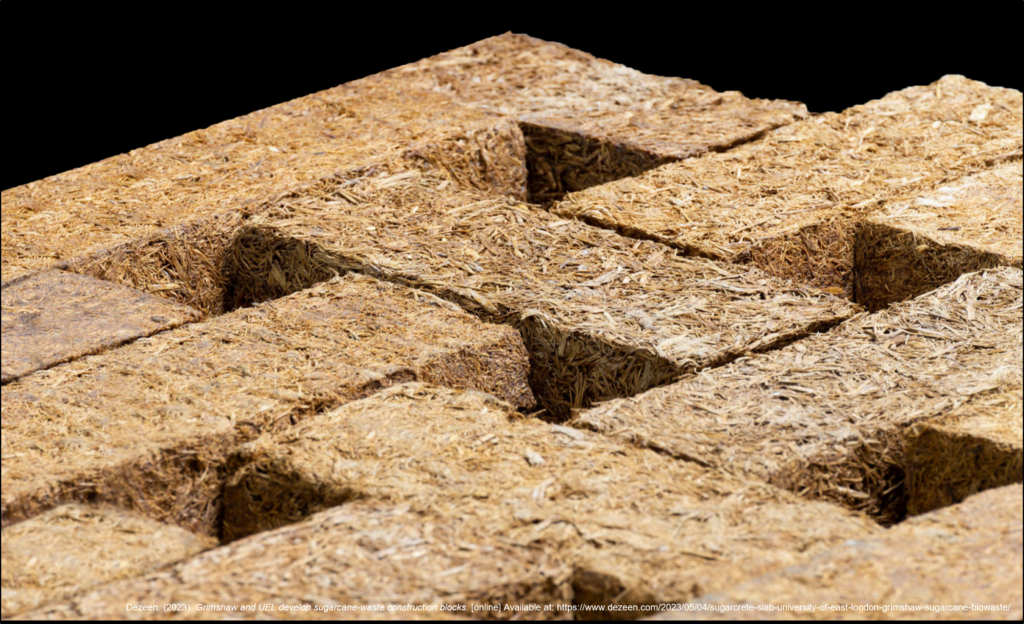
The first one being sugarcane bagasse, a fibrous residue derived from the milling process. This versatile material has recently gained attention as a biomaterial for construction, offering a potential alternative to traditional brick and concrete structures.
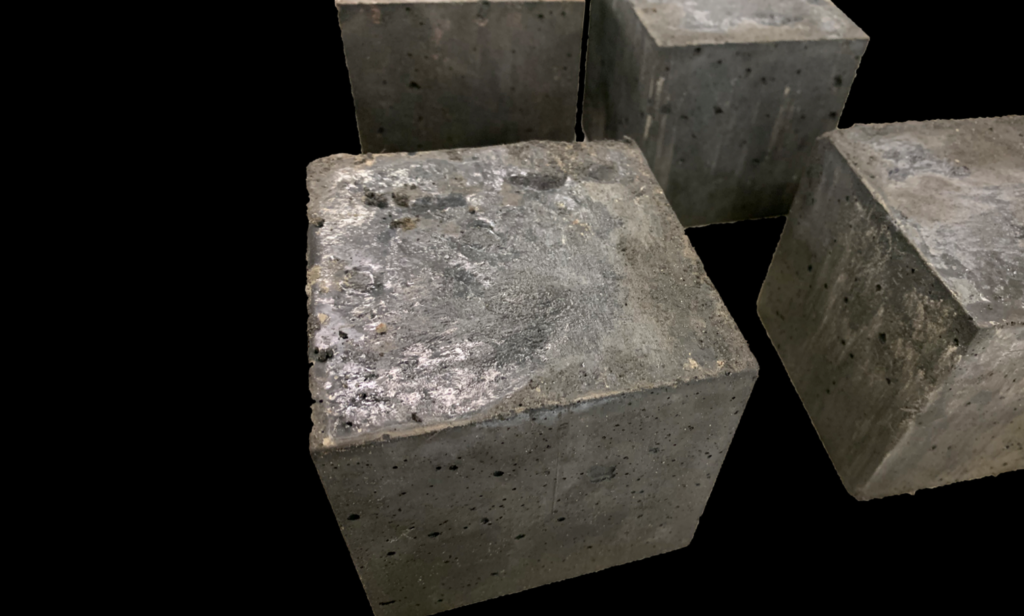
The second material of interest is bagasse ash, which is the residual product obtained from boiling the bagasse. This ash possesses pozzolanic properties, making it capable of substituting a portion of cement in concrete, which is a specific material that is extracted through the traditional mining methods and is responsible for the majority of carbon dioxide emissions in the industry. This unique pozzolanic characteristic of the ash stems from the presence of silica in bagasse ash, which reacts with cement’s calcium hydroxide and water, resulting in the formation of a gel-like structure.
RE-ENGINEERING THE SUGARCANE PROCESS
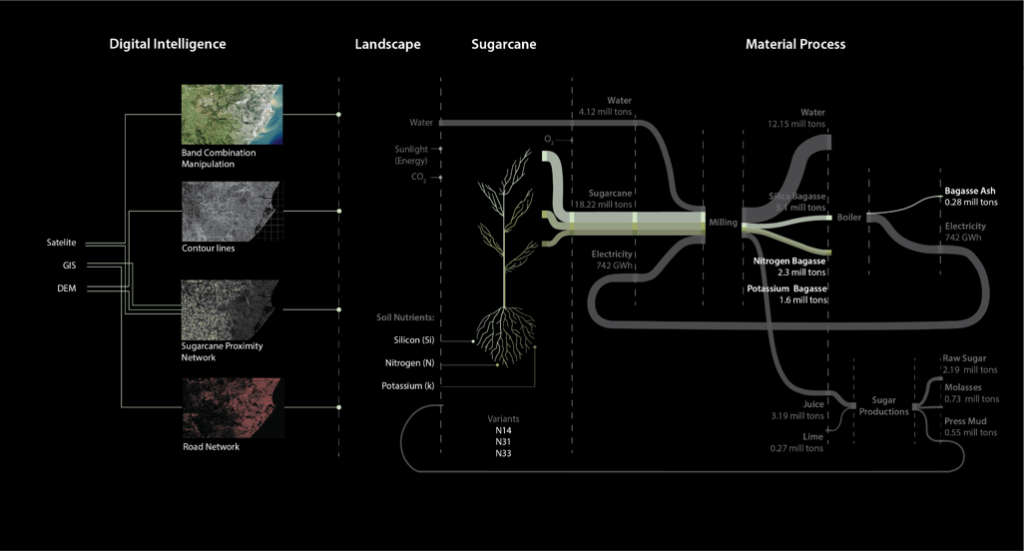
By redirecting our focus and shifting the innovation emphasis within this existing industry, we can transform it from solely an agricultural sector to one that responsibly extracts and mines valuable resources for the built environment, in a more regenerative and sustainable manner.
By placing the emphasis on the sugarcane plant itself and establishing it as the central focus of the industry, along with the integration of digital intelligence into the process, we unlock the potential for a profound understanding of the landscape and territory, transforming them into active components of the industry. As a result, we can optimize the utilization of the landscape and efficiently harness the diverse range of byproducts generated throughout the process.
SITE LOCATION
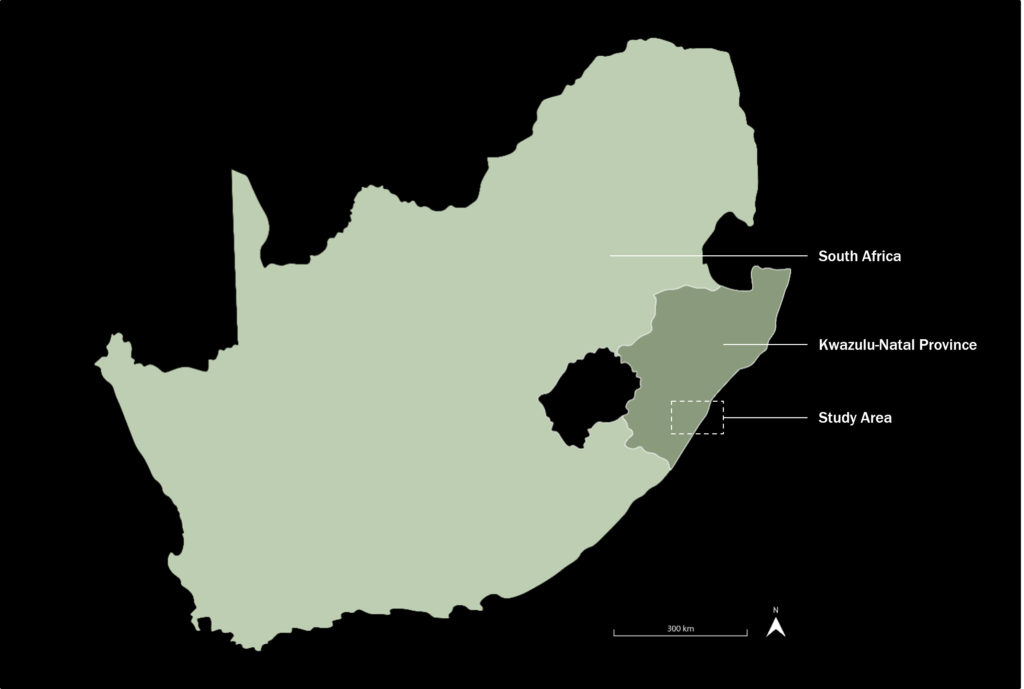
The study area selected for this analysis is situated in the province of KwaZulu-Natal, South Africa. This location was specifically chosen for its blend of urban hotspots and extensive sugarcane agricultural land, providing an ideal setting for exploring the potential of regenerative mining.
The study area extends over a longitude of 62 km and latitude of 37 km, and a spatial reference grid with a size of 4 by 4km will be utilized throughout this presentation.
BAND COMBINATIONS
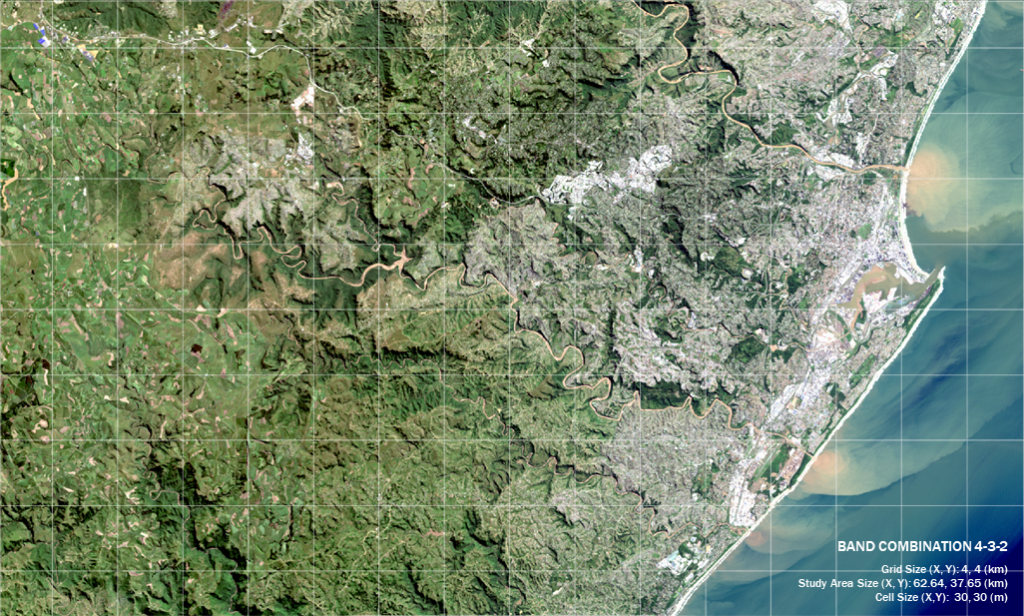
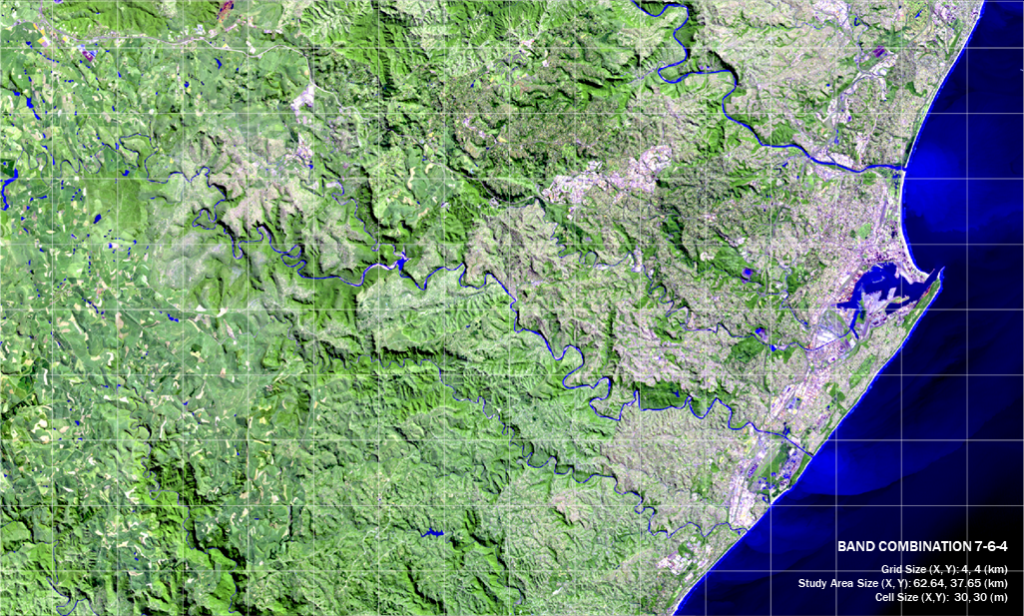
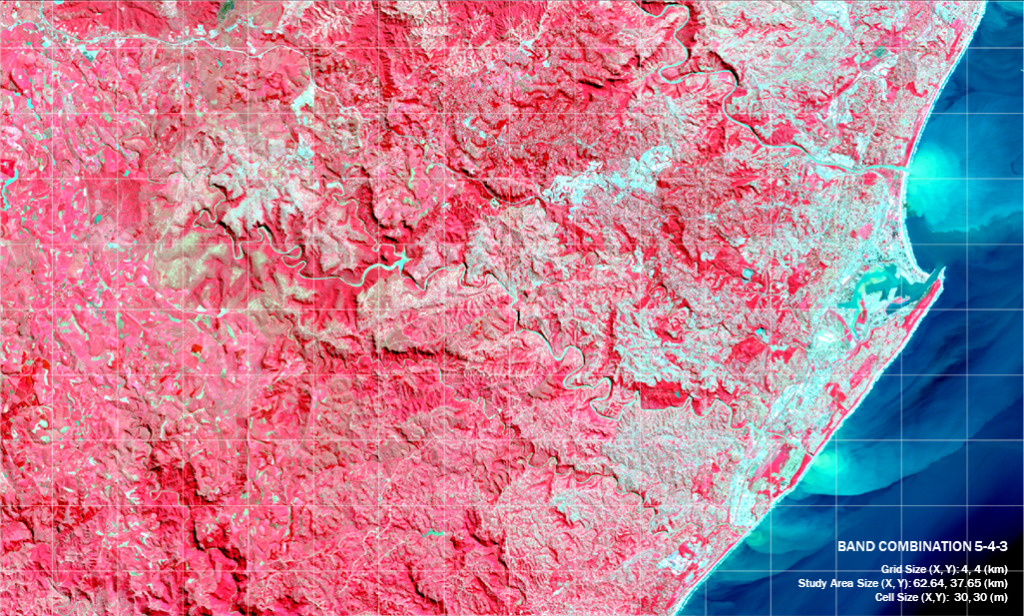

The use of different band combinations provided a more comprehensive understanding of the study area, revealing the stark contrasts in land use between the natural agricultural and mountainous regions on the left, and the urbanized and man-made areas on the right.
DEM DATA



GIS FILE DATA FOR SUGARCANE FIELDS
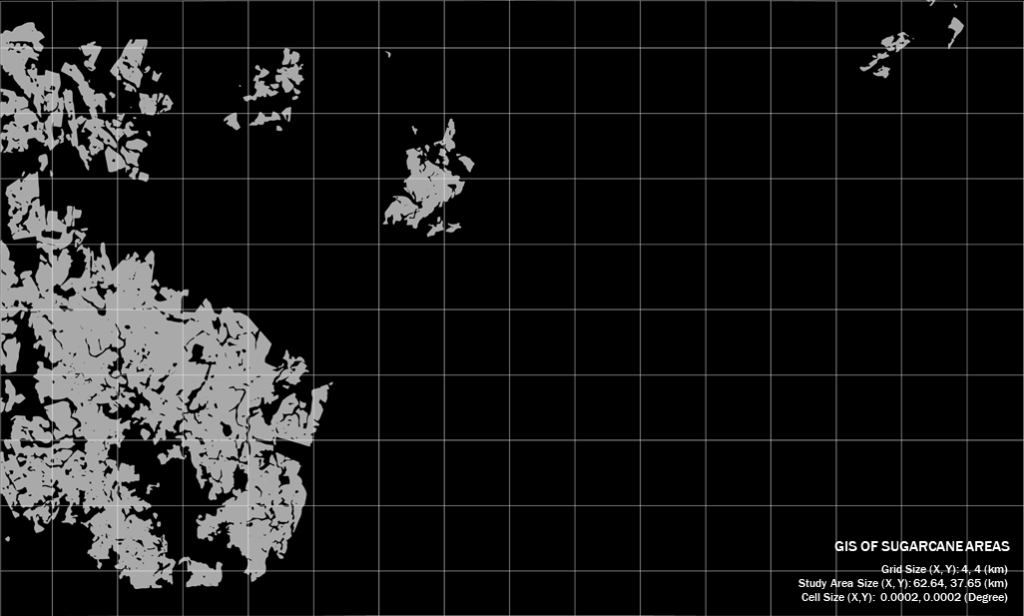
Additionally, for further validation, a GIS file was utilized to confirm the locations of the agricultural areas, specifically the sugarcane fields. These fields were extracted from the file which confirmed the concentration of the cultivations on the left of the study area, validating our previous observations.
GRADIENT AND PROXIMITY NETWORK
By utilizing band combinations and image editing techniques, the two areas were distinguished. Band combination 1-1-3 was particularly useful in highlighting the split between man-made and territorial land, with agricultural land appearing purple and urban land appearing white. However, to avoid confusion with darker areas around the mountains, these areas were softened using Photoshop.


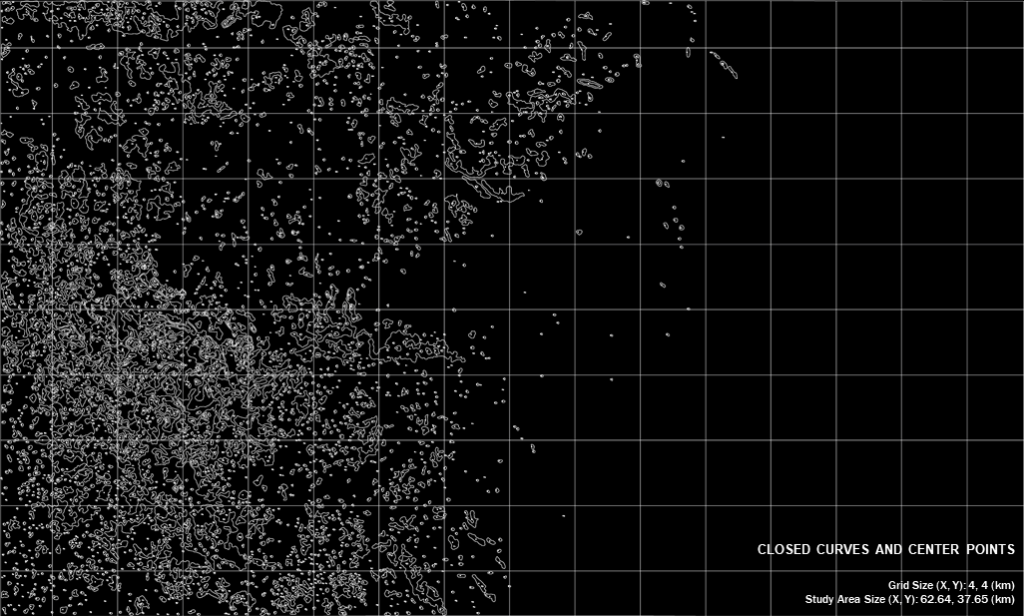
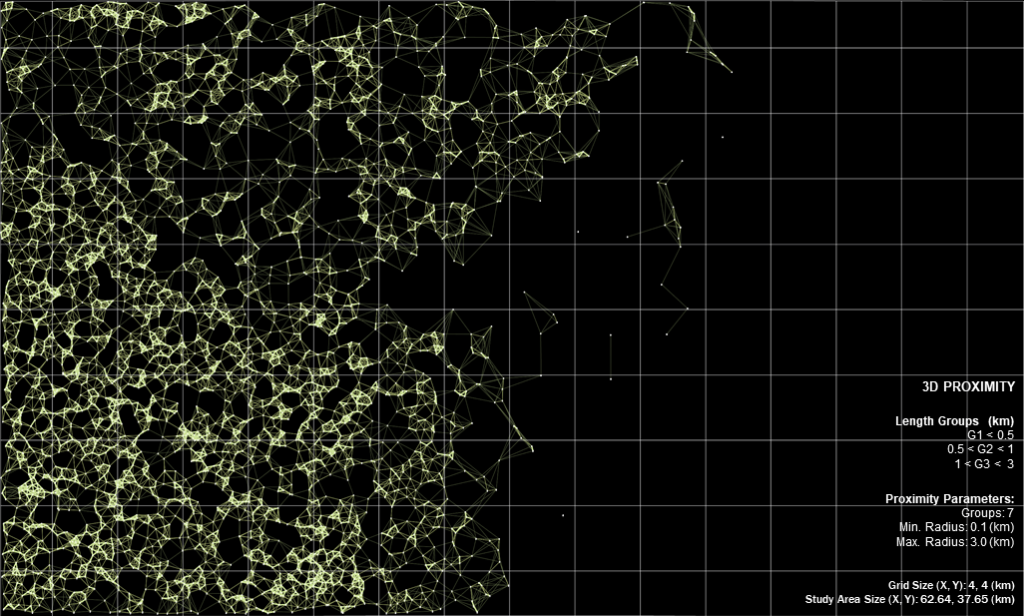
ROAD NETWORK
To establish a connection between the agricultural proximity network and the urban area, it was necessary to obtain a road network that accurately represented the distribution and extent of the urban areas.
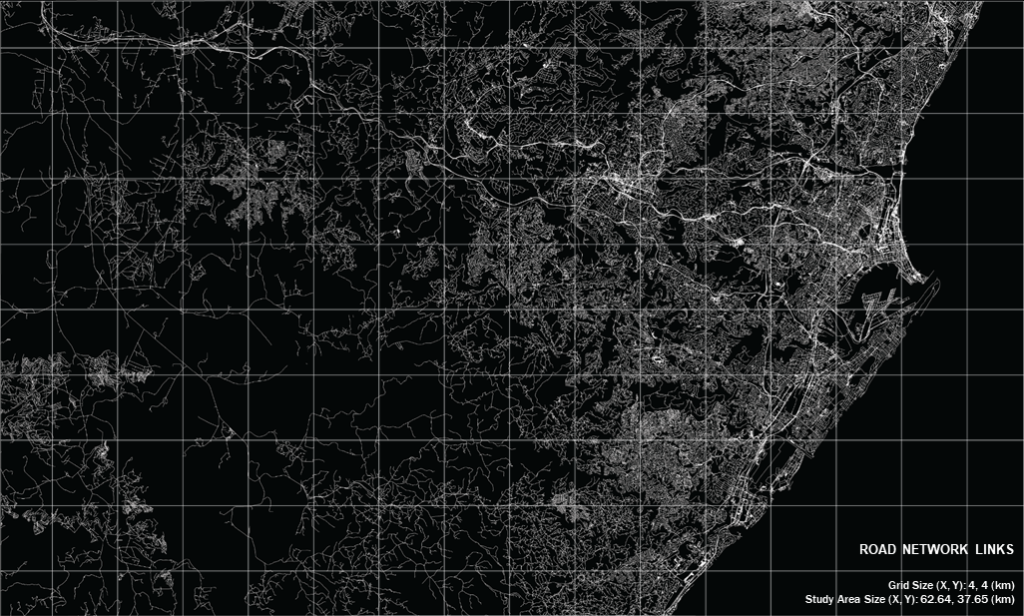

ROAD NETWORK AND SUGARCANE PROXIMITY OVERLAY

By overlaying the road network on the agricultural proximity network, a clear contrast emerged between the two areas.

An area of particular interest was highlighted, where the sugarcane fields and road networks overlap, providing a suitable area to demonstrate the concept of mining through agriculture and living systems.
4KM BY 4KM AREA FOR FURTHER ANALYSIS


To visually represent the terrain, contour lines were extracted and the use of a tonal gradient shows the highest and lowest elevations within the area.
FORMULATING THE ORGANISATIONAL STRATEGY

To formulate an effective organisational strategy, the input requirements and key characteristics associated with sugarcane cultivation derived from the landscape itself were looked at. Among these factors, soil nutrients emerged as a crucial determinant for the growth and overall well-being of sugarcane plants.
In particular, the substantial uptake of silicon, nitrogen, and potassium nutrients by sugarcane plays a crucial role in shaping both the plants growth and the desired minerology of the bagasse and bagasse ash, the two biomaterials previously identified.
The uptake of silicon by the sugarcane plant, contributes to the pozzolanic ability of the bagasse ash due to the high silica content. On the other hand nitrogen is essential for the sugarcane growth, bagasse quality and yield. Where potassium is additionally crucial for maintaining sugarcane yields and contributes to the quality of bagasse.
Furthermore, the type of sugarcane plantation also plays a significant role in determining the absorption levels of these nutrients. It is important to note that currently, the industry focuses on the selection of sugarcane variants that yield strong and resilient plants. However, by exploring a different approach of the selection of these variants, we can optimize and achieve the best possible characteristics of the by-products.
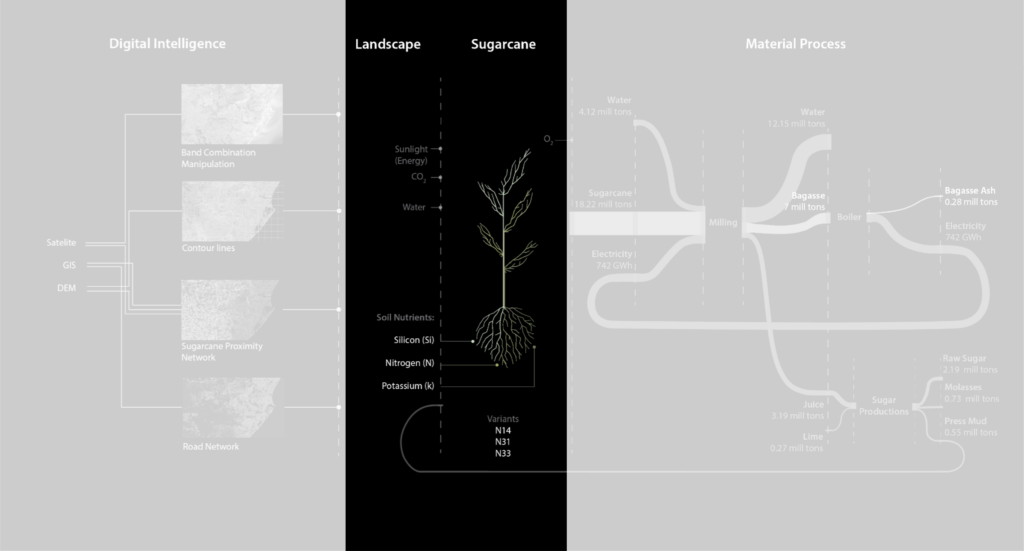
One particular sugarcane variant, N14, has been observed to absorb high quantities of silicon, resulting in a higher silica composition within the plant. In contrast, N31 exhibits high nitrogen absorption, resulting in a high fiber content in the bagasse, thus making it an ideal biomaterial. The N33 variant additionally showcases remarkable traits such as high fiber and growth, making the bagasse once again an ideal biomaterial. Furthermore, it displays a strong ability to withstand water stress. These characteristics can be said to strongly indicate a significant absorption and presence of potassium within the N33 variant.
Therefore, the selection of sugarcane variants and careful consideration of soil nutrients are essential factors in optimizing the advantages obtained from the by-product materials.
ORGANISATIONAL STRATEGY
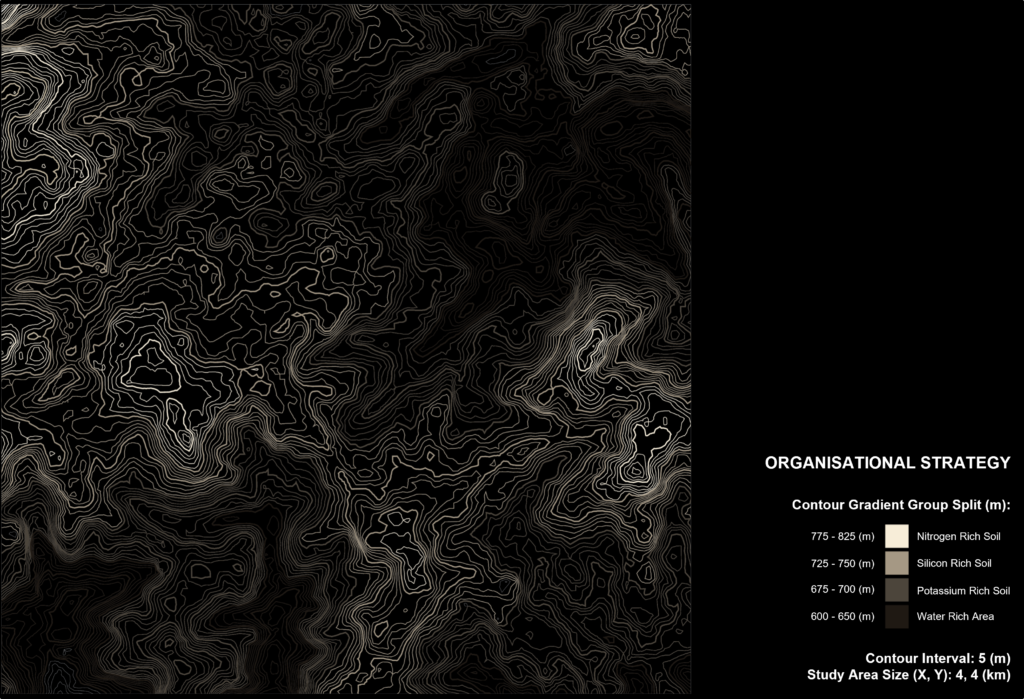
To ensure a systematic approach, the organisational strategy for the division of the area into distinct groups was based on the principle that contour heights correlate with specific soil characteristics and nutrient compositions. As a result, the following groups were assumed as having the subsequent potentially nutrient-rich soils:
- The highest elevation group contains nitrogen-rich soil.
- The next lower contour group houses silicon-rich soil.
- The subsequent contour group contains potassium-rich soil.

The lowest contour lines indicate areas with abundant water, as when we analyze the water flow over the area, the water tends to accumulate in these lower regions.

Considering the importance of water in the milling process, the milling facilities are strategically decentralized and located in these water-rich areas. This deliberate placement optimizes the utilization of this valuable natural resource from the surrounding landscape, ensuring efficient and effective use of water as a crucial input in the milling process.
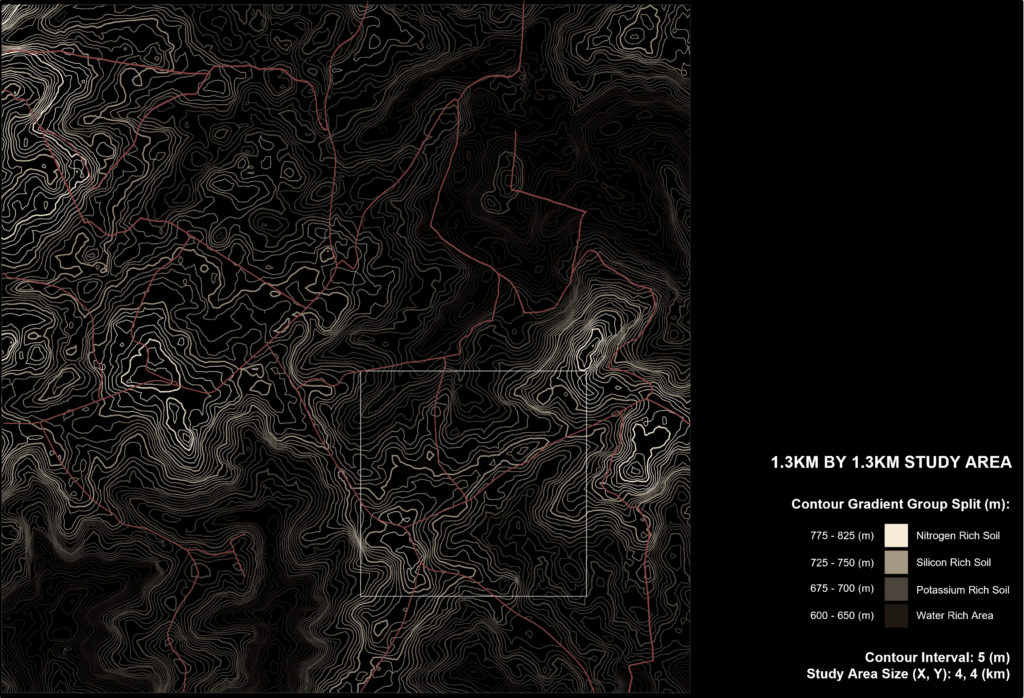
Therefore, after overlaying the road network onto the systematically organized area, a smaller 1.3km by 1.3km section was chosen for closer examination. Within this selected area, the different sugarcane variants can be strategically planted based on the varying nutrient-rich soils. This approach aims to maximize the quality of bagasse and bagasse ash materials, optimizing their suitability for the various applications.

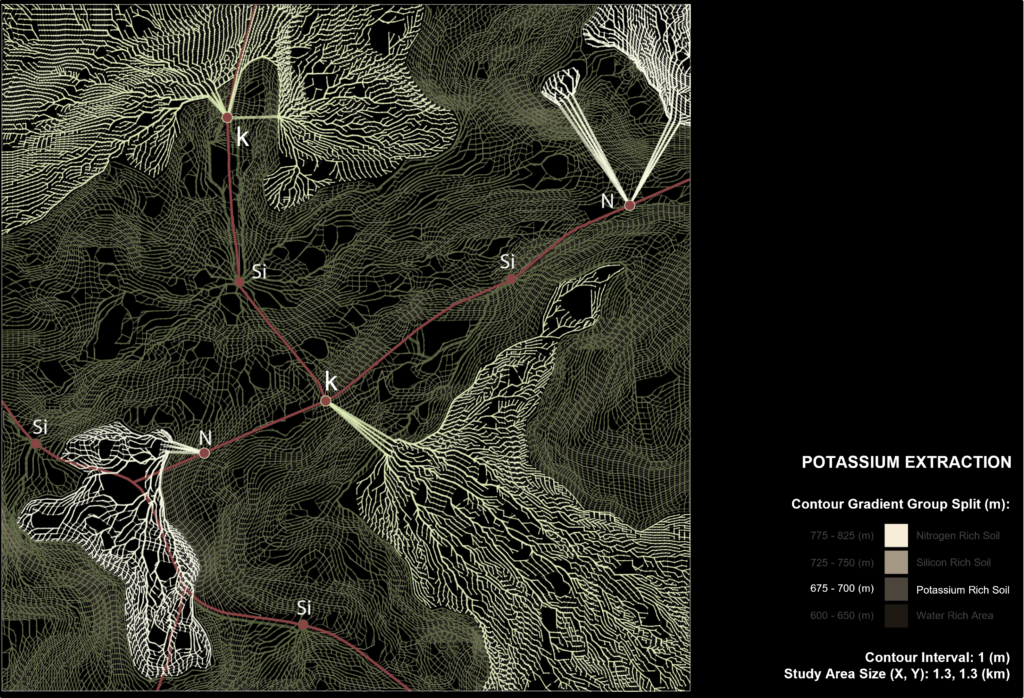
Thus, sugarcane variant N31 is planted in the area with high nitrogen nutrient-rich soil. When these sugarcane plantations are harvested , it can be viewed as more than just the extraction of the plants but also the extraction of the valuable nitrogen minerals from the soil. Likewise, the variant N14 is specifically planted in silicon-rich soil, enabling the extraction of silicon during harvesting. Lastly, the N33 variant is cultivated in potassium-rich soil, facilitating the extraction of potassium minerals upon harvest.
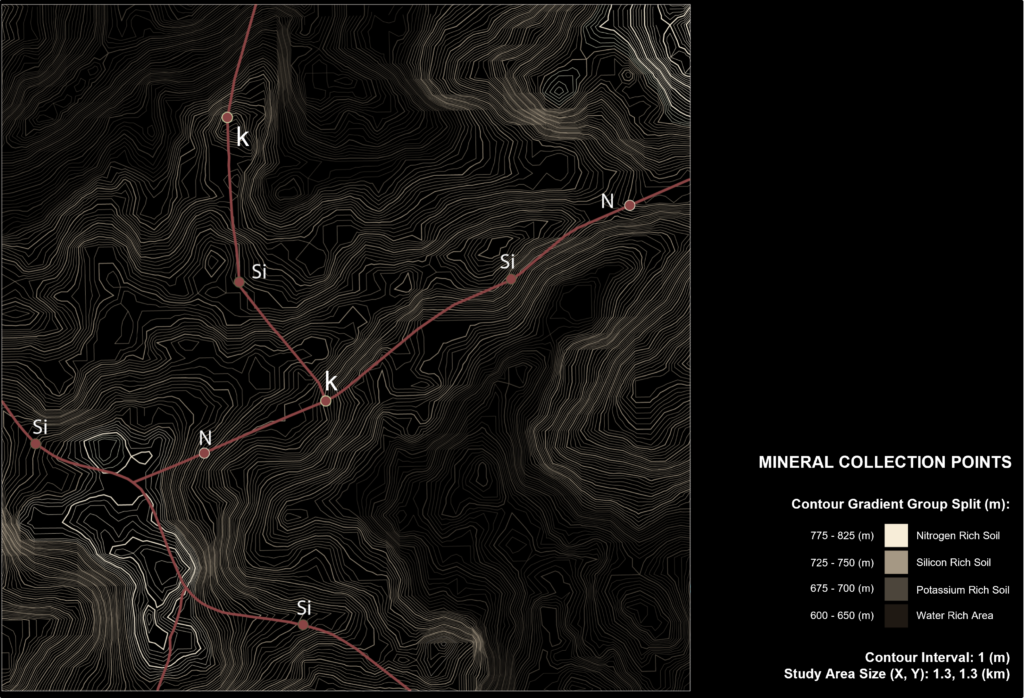
This process therefore yields specific points along the road network that can be considered as mineral collection points or locations rich in specific minerals.
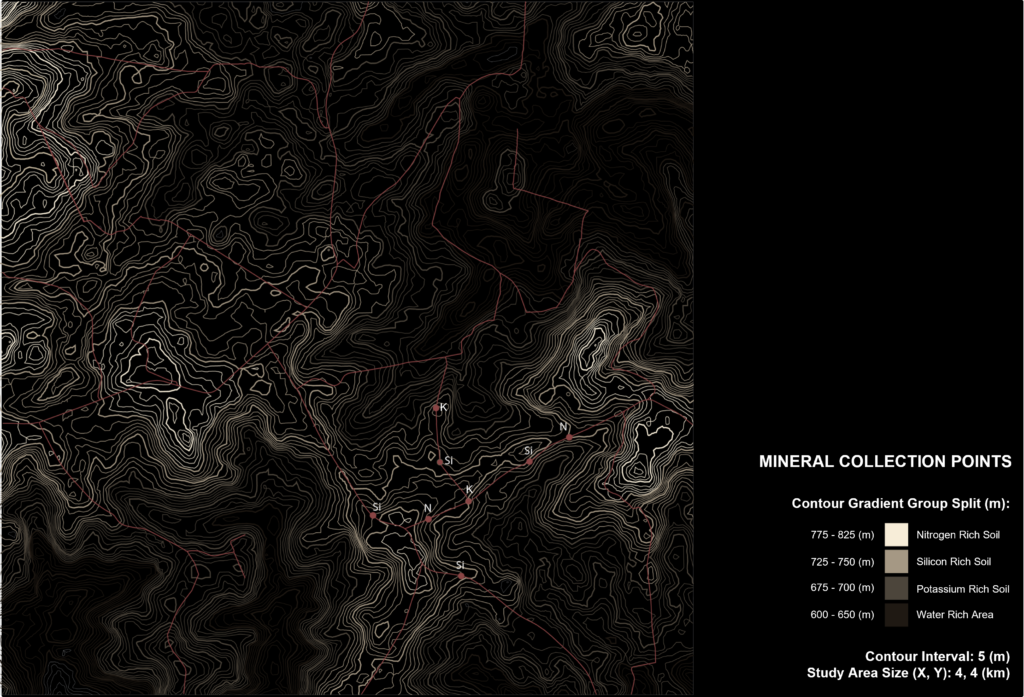
Therefore when we zoom out, we are left with the mineral collection points on the road network, which can then be taken strategically to the milling.
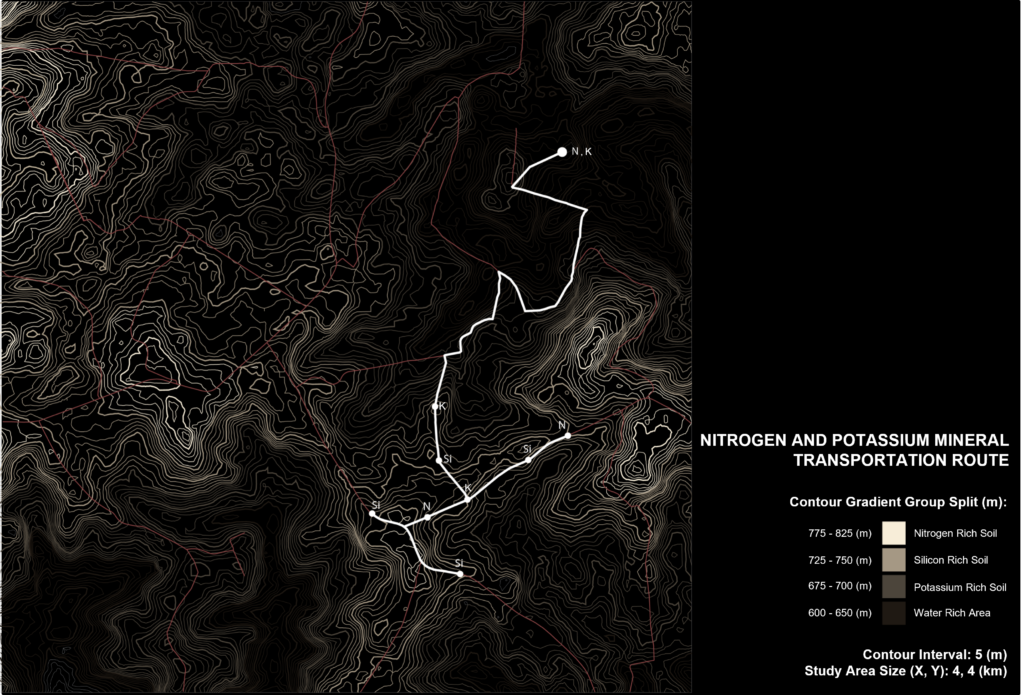
In considering the material flow, sugarcane rich in nitrogen and potassium is ideal for obtaining high-quality bagasse suitable for biomaterial production. Therefore these plants undergoes the milling process to extract the fibrous bagasse, which can be utilized for biomaterial applications.
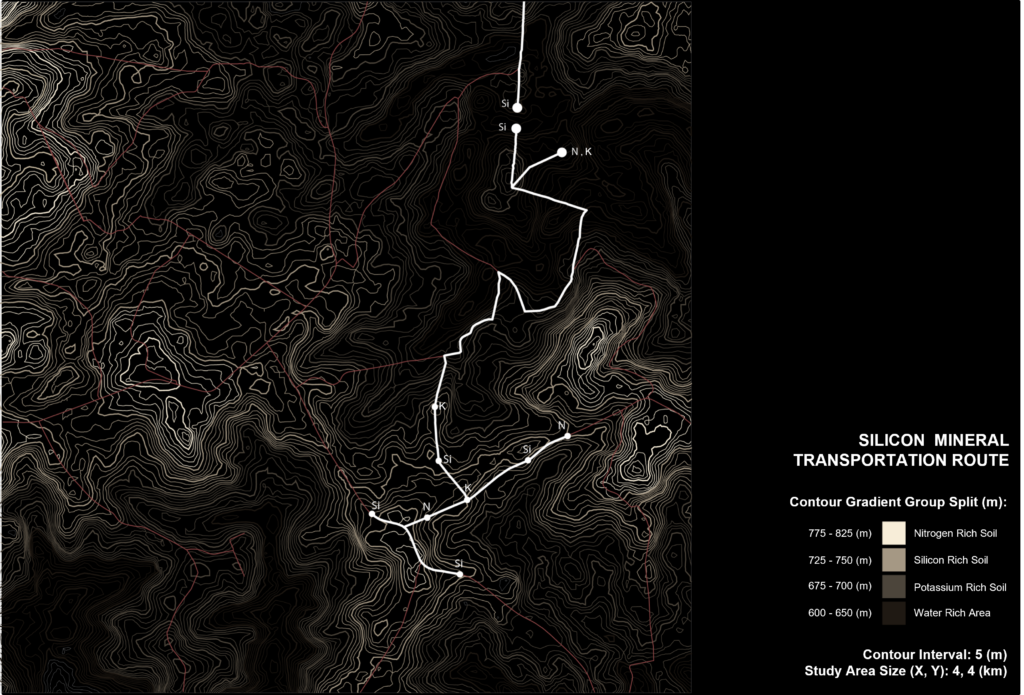
On the other hand, the silicon-rich sugarcane, follows a slightly different path. After milling, this sugarcane is directed to boilers which are centralized where it is burned to obtain silica-rich bagasse ash. This bagasse ash, with its pozzolanic properties, can then be utilized as a replacement for cement in various construction applications.
In conclusion, the exploration of alternative mining methods within the realm of existing agriculture presents a promising opportunity to address the environmental challenges associated with traditional mining practices. By shifting our focus towards sustainable approaches, we can mitigate the depletion, excavation, and exhaustion of natural resources that occur in the built environment. Agriculture offers an exciting avenue to tap into the mining potential and produce materials in a more sustainable and regenerative manner. By embracing innovative techniques and technologies, we can harness the power of bio-based materials and cultivate them in a way that minimizes environmental impact. This shift not only promotes resource conservation but also opens doors to a more sustainable built environment and the overall well-being of our planet.
CREDITS
Regenerative Mining: Unleashing the Untapped Mining Potential Through Agriculture and Living Systems is a project of IAAC, Institute for Advanced Architecture of Catalonia developed at the Master in Advanced Architecture in 2022/2023 by student: Emily Rackstraw and faculty: Marco Poletto, Claudia Pasqueru

